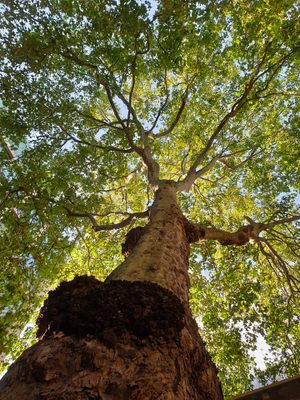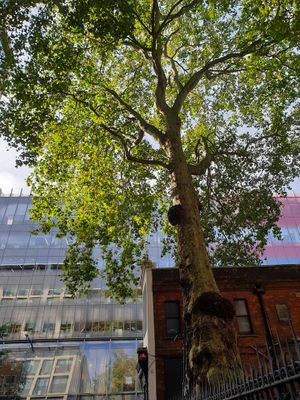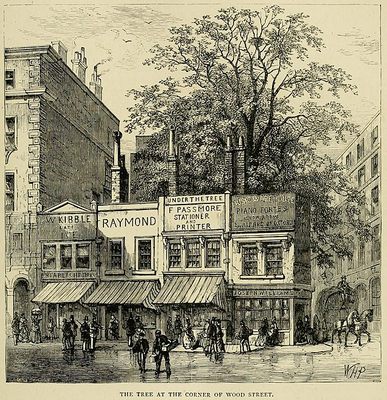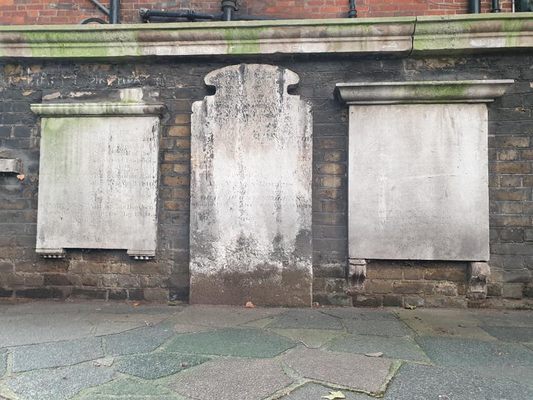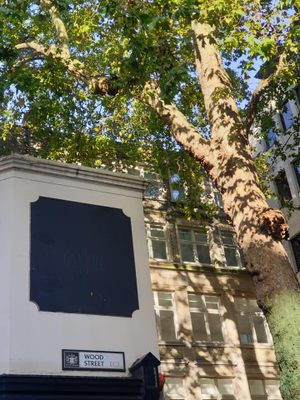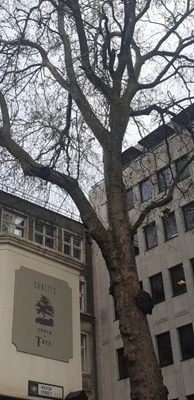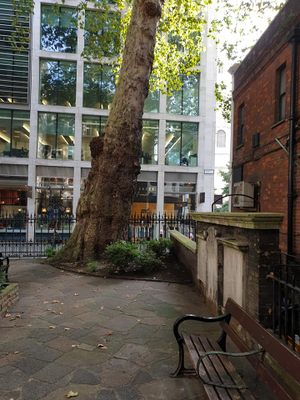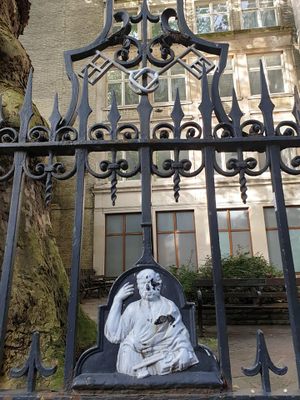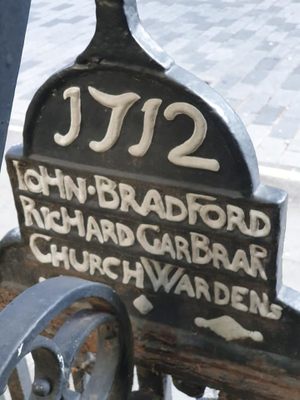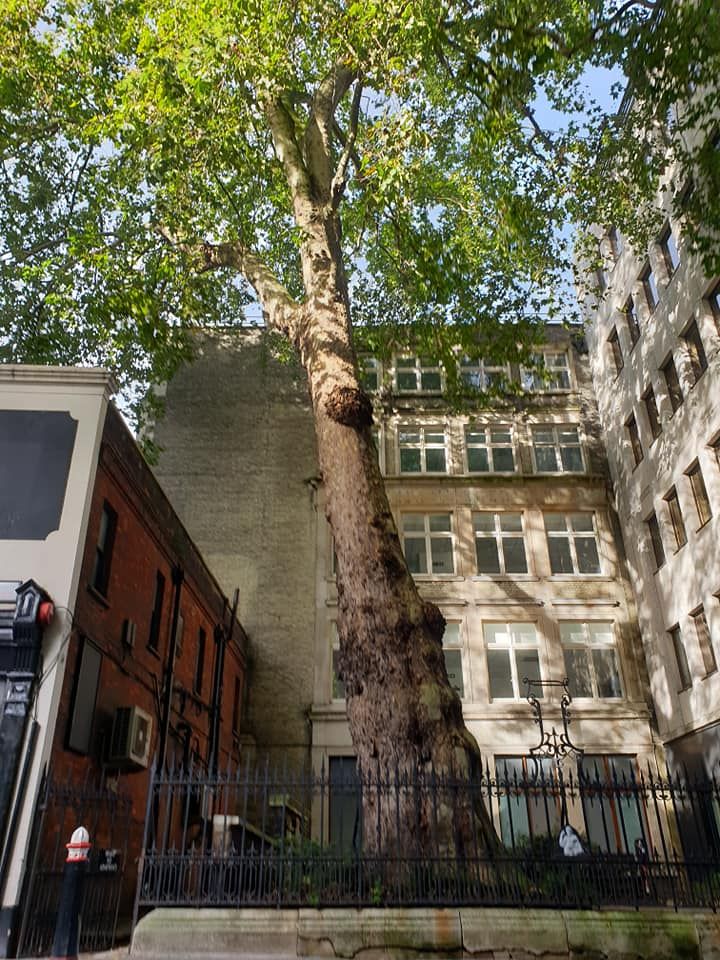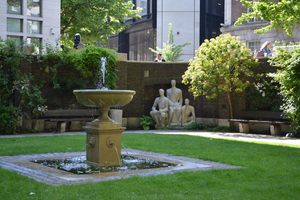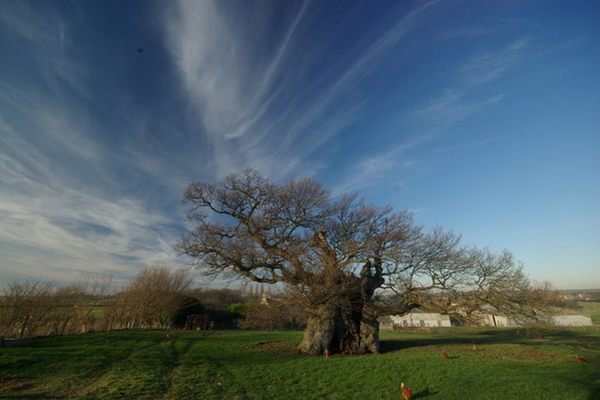About
One would be forgiven for overlooking this unassuming tree. Though it stands an impressive 70 feet tall, the towering skyscrapers around the vicinity of St. Paul's Cathedral make it seem small. But the plane tree, which is situated near the intersection of Cheapside and the aptly-named Wood Street, may be the oldest living tree in London.
Though there are no written documents to show when it was planted, this tree has appeared in multiple news articles over the centuries and perhaps even a poem by William Wordsworth. What is known is that the property where it stands was once the location of St. Peter's Cheap church. This particular place of worship did not survive the Great Fire of 1666, and there are several remnants that alluded to this, including several headstones and a marker dated 1712, attached to the railing that surrounds this peaceful oasis.
Just south of this location on Cheapside stood the Cheapside Eleanor Cross, built around 1292 to mark the penultimate overnight resting place of his Queen, Eleanor of Castile who died in 1290. The cross was around 12 meters tall and very ornate, being covered with gold leaf. The cross was demolished during the English Civil War by orders of Parliament on 2nd May 1643.
There are a number of newspaper reports from the early part of the 19th century that reference there being a tree at this location, and even state that it may have been there several decades earlier. In 1853, a cab company advertised its business location by referencing the landmark as: "Under the tree, Cheapside." In 1901, the tree was described by The Manchester Courier as "the most valuable tree in the world." More recently, it was recognized as one of the Great Trees of London.
It is identified as a plane tree, one of several species that belong to the genus Platanus. Considering its height, nearly four stories, it certainly survived the bombings and resulting fires from the London Blitz of the 1940s. The surrounding buildings, it has been suggested, are prevented from building any higher, so as to give this majestic living entity the room it needs to continue to grow.
Related Tags
Know Before You Go
If you don't mind the cigarette fumes (as this place is a popular spot for the neighboring office workers to grab a quick smoke), this tranquil setting makes for an ideal location to enjoy a lite bite and pay homage to a silent, aged giant.
Community Contributors
Added By
Published
January 6, 2022

